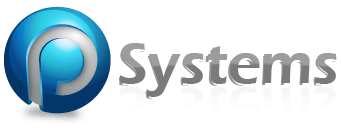
In the rapidly evolving digital landscape, where data breaches and cyber threats loom large, safeguarding sensitive information is paramount. Identity and Access Management (IAM) emerges as a linchpin in fortifying digital perimeters and ensuring only authorized users access critical resources. This technical blog unravels the intricacies of IAM, delving into its core components, best practices, and its pivotal role in securing modern enterprises.
Understanding Identity and Access Management (IAM)
IAM is the cornerstone of cybersecurity strategies, encompassing processes, technologies, and policies to manage user identities and control their access to systems and data. At its core, IAM answers the fundamental questions of who has access, what they have access to, and under what circumstances.
Key Components of IAM
- Authentication:
- IAM begins with robust authentication mechanisms, ranging from traditional username-password pairs to multifactor authentication (MFA), biometrics, and adaptive authentication, ensuring a layered defense against unauthorized access.
- Authorization:
- Authorization defines what resources a user can access. Role-based access control (RBAC), attribute-based access control (ABAC), and least privilege principles are fundamental to IAM authorization strategies.
- Directory Services:
- Centralized directories, often implemented through LDAP or Active Directory, serve as the bedrock for IAM. They store user attributes, group memberships, and enable efficient identity management.
- Single Sign-On (SSO):
- SSO streamlines user experience by allowing them to access multiple applications with a single set of credentials. Protocols like OAuth and SAML facilitate secure authentication across diverse systems.
- Lifecycle Management:
- IAM involves managing the entire user lifecycle, from onboarding to offboarding. Automated provisioning and de-provisioning ensure timely access adjustments, reducing security risks.
IAM Best Practices
- Zero Trust Model:
- Adopt a Zero Trust approach, treating every access attempt as potentially malicious. Continuously authenticate and validate users and devices, even those within the network perimeter.
- Continuous Monitoring:
- Implement real-time monitoring and analytics to detect anomalous behavior, flagging potential security incidents promptly.
- Encryption and Tokenization:
- Encrypt sensitive data and use tokenization to protect personally identifiable information (PII) during authentication processes, minimizing exposure to threats.
- Audit Trails and Compliance:
- Maintain comprehensive audit trails to track user activities and changes. IAM systems should align with industry regulations and compliance standards.
- Privileged Access Management (PAM):
- Employ PAM solutions to manage and monitor privileged accounts, reducing the risk associated with unauthorized access to critical systems.
IAM in the Cloud Era
With the proliferation of cloud services, IAM extends its reach to cover cloud-based applications and infrastructure. Cloud IAM solutions, such as Azure Active Directory, AWS Identity and Access Management, and Google Cloud Identity, seamlessly integrate with on-premises IAM, providing a unified approach.
Conclusion
As organizations navigate the digital frontier, IAM emerges as the linchpin of robust cybersecurity postures. By adopting best practices, leveraging advanced authentication methods, and embracing IAM in the cloud era, businesses can fortify their defenses against evolving cyber threats, ensuring a secure and compliant digital environment. In the ever-changing landscape of cybersecurity, IAM stands as a beacon of trust and control.




